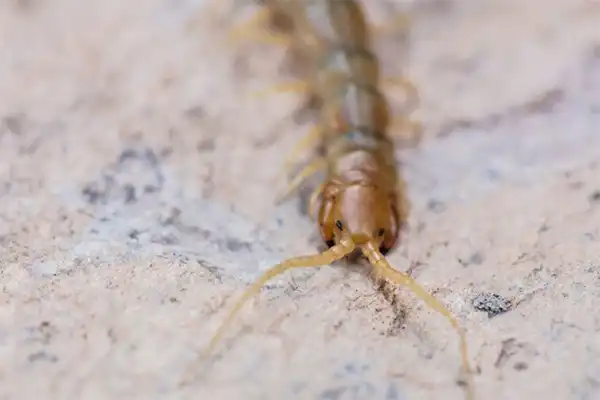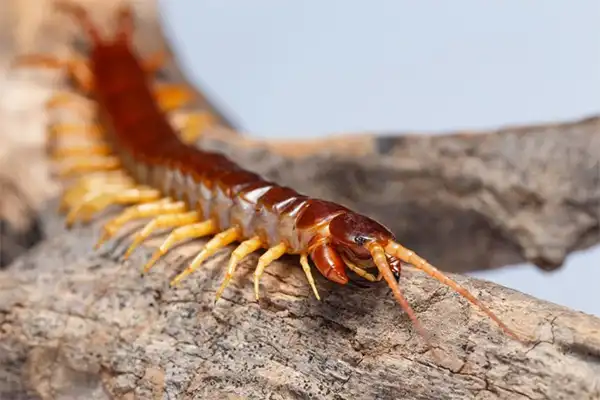Visitors to Maui tend to come for the sun, sea, and aloha lifestyle. Not for the giant bugs.
But while Maui is an island paradise that’s largely lacking creepy crawlies, there are a few many-legged fiends for visitors to be aware of. Perhaps the biggest, and, unfortunately, we mean that literally, is the Maui centipede.
Maui centipedes have a nasty bite and a love for dark places. Find out all you need to know with this guide.
What Is The Maui Centipede?
Table of Contents
While many tropical paradises balance clear seas and panoramic views with dangerous insects, Maui is lucky to avoid the worst of the creepy crawlies. (There are some dangerous animals.)
The Hawaiian centipede is the main exception to this trend. Long, armored, and with a nasty bite, the centipede is the scourge of many happy camping vacations.
There are three types of centipedes in Hawaii. These are the Scolopendra, the Lethobius, and the Mecistocephalus. It’s the Scolopendra that visitors need to look out for. Although the bite isn’t fatal, it can be incredibly painful.
The Scolopendra is the largest, and the objectively worse of the centipedes. It can grow to over 5 inches long, doesn’t scare easily, and has a venomous bite.
Although a bite from this centipede is only likely to result in a few days of pain, it can cause allergic reactions.
The Lethobius and Mecistocephalus centipedes are harmless, apart from the shock they can cause when you see one in the bathroom.
These are smaller than the Scolopendra, and don’t bite. You may not relish an encounter, but they don’t cause any serious problems.
Is The Maui Centipede Dangerous?
The Maui centipede isn’t exactly dangerous, although a bite can be painful. The Lethobius and Mecistocephalus centipedes are completely harmless, if a little creepy.
As for the Scolopendra centipede, bites are rare but they can be nasty. Those who’ve been bitten can expect persistent pain, some redness, and possibly swelling.
After a few days, the pain should start to fade, before going completely.
However, some do have a more extreme reaction to the bite. It can result in serious swelling, which is likely the result of an allergic reaction. This sort of reaction is rare, but remain alert if you’ve been bitten.
If the pain hasn’t healed in a few days, or there is significant swelling, seek medical attention.
How Common Are Maui Centipedes?
There’s a good chance you’ll spot a centipede on Maui, particularly if you’ve chosen to stay away from the resorts. They’re very common, and they particularly like to explore kitchens and bathrooms.
Centipedes also like damp and dark places such as wood and leaves, so prepare to see some if you’re planning a hike on West Maui or East Maui.
The good news is, most of the centipedes you’ll encounter are harmless. But you might still want to give them a wide berth.

What To Do If You’re Bitten By A Maui Centipede
A centipede bite can often be identified by the double pincer mark they leave behind. Alternatively, you might be able to spot the centipede that did it to you. In some cases, the first thing you need to do is remove the centipede!
This can be surprisingly tricky, as once they have their jaws in, they aren’t always keen on letting go. For the unlucky few, you’ll need to pull the centipede off the skin, and place it as far away as possible.
They’re very well armored, so we don’t recommend trying to bash them away.
In most cases, the best way to respond to the bite is with ice and elevation. Keep the area clean, especially if you’re enjoying a hike in the wilder parts of Maui.
Pain medication such as ibuprofen can be used to control the inflammation, and reduce pain.
Some swelling and redness is not unusual, but speak to a doctor if you experience a serious reaction. Significant swelling and redness will often need to be treated in hospital, to avoid infection and keep the bite under control.
How To Protect Against Centipede Bites
Always check your shoes before putting them on! Putting your foot into a shoe being shared by a centipede is the sort of experience you’ll never forget, and most of us want to avoid living through it once.
A quick check can avoid a lifetime of horror. Similarly, you might want to avoid walking barefoot.
In the home, the best way to avoid centipedes is to seal any openings that a bug might climb in through. Don’t leave your clothes piled up on the floor, and avoid any clutter.
Give your clothes a quick shake before putting them on, and do the same with bedding and towels. This probably isn’t necessary if you’re staying in a resort, but it’s a good habit to get into.
Around the property, clear away any piles of stones, leaves, or wood that may have gathered. Centipedes love these sorts of places, and tend to seek dry shelter after rain.
Camping And Centipedes
If you plan on camping on Maui, invest in a good bug net, and consider using a hammock. Give everything a good shake before going to bed, and do the same in the mornings.
Avoid leaving any food scraps around, as these can attract centipedes (among others). We also recommend a set of hiking poles, so you can flick away any centipedes that might be invading your space.
Avid campers tend to be used to bug encounters, but the size of the Maui centipede might take you by surprise. The best way to avoid a nasty shock, and an even nastier bite, is to stay alert.
Final Thoughts
Most visitors to Maui resort towns can avoid ever having a close encounter with a centipede. However, it’s worth being aware of the danger, so you aren’t taken completely by surprise by a 5-inch Scolopendra.
Their bites might not be dangerous, but they are painful. Avoid a bite by shaking out any clothes left on the floor, and wearing good shoes on a hike.

